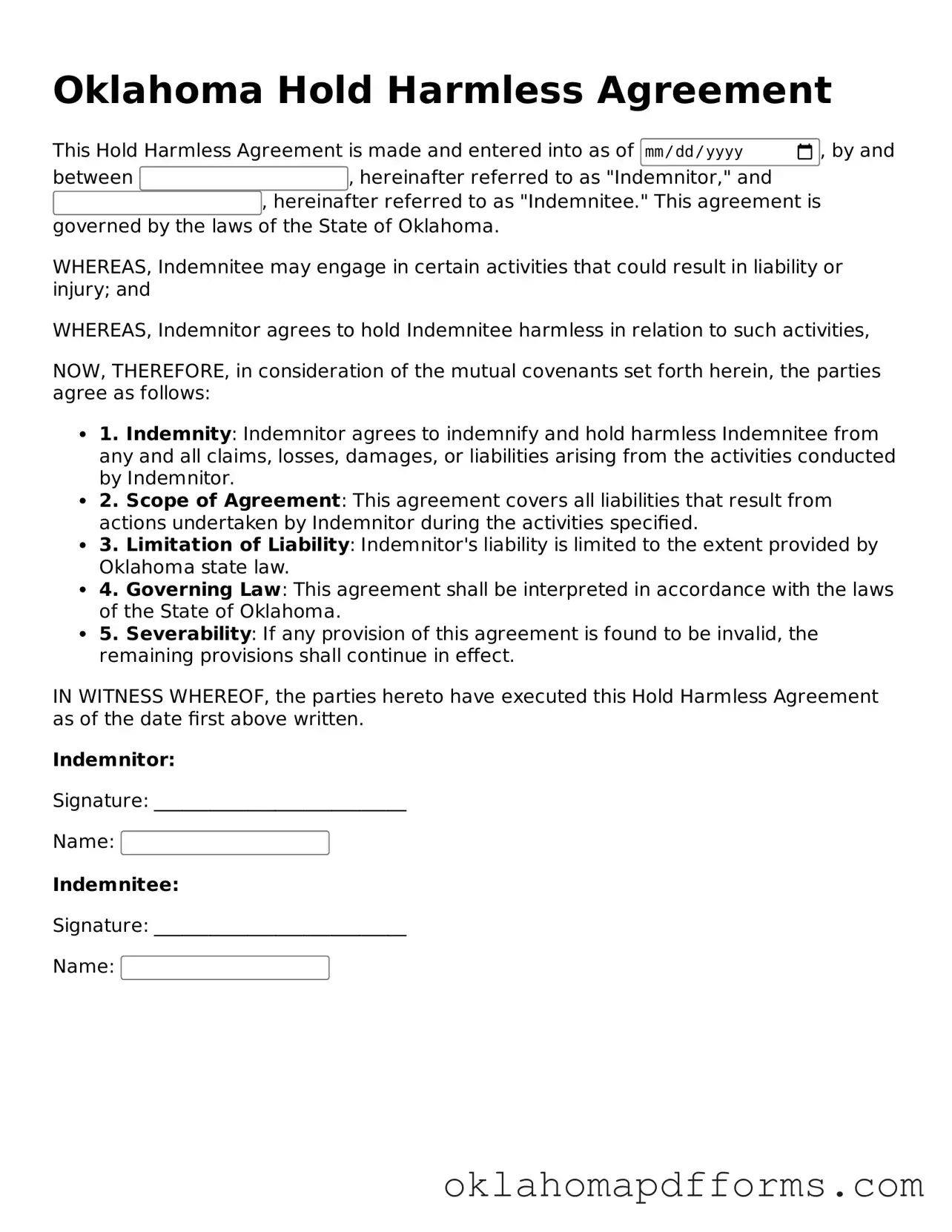What is an Oklahoma Hold Harmless Agreement?
An Oklahoma Hold Harmless Agreement is a legal document that protects one party from liability for any injuries or damages that may occur during a specific activity or event. By signing this agreement, one party agrees not to hold the other party responsible for any claims that may arise, effectively transferring the risk associated with that activity. This agreement is commonly used in various contexts, such as rental agreements, event planning, and construction projects.
Who typically uses a Hold Harmless Agreement in Oklahoma?
Hold Harmless Agreements are often utilized by businesses, property owners, event organizers, and contractors. For example, a venue owner may require an event organizer to sign this agreement to protect against potential claims from attendees. Similarly, contractors may use it to shield themselves from liability related to accidents that occur on a job site. Individuals participating in recreational activities, such as sports or outdoor events, may also encounter this agreement.
What are the key components of a Hold Harmless Agreement?
A comprehensive Hold Harmless Agreement typically includes several essential elements: the names of the parties involved, a clear description of the activity or event, the specific risks being assumed, and a statement of intent to indemnify. Additionally, it may outline any limitations on liability and include signatures from both parties to confirm their understanding and acceptance of the terms.
Is a Hold Harmless Agreement enforceable in Oklahoma?
Yes, a Hold Harmless Agreement can be enforceable in Oklahoma, provided it meets certain legal requirements. The agreement must be clear, specific, and voluntarily signed by both parties. However, it is important to note that courts may not enforce provisions that attempt to waive liability for gross negligence or willful misconduct. Therefore, it is advisable to seek legal counsel when drafting or signing such agreements to ensure compliance with state laws.
Can a Hold Harmless Agreement be revoked or modified?
Yes, a Hold Harmless Agreement can be revoked or modified, but this typically requires mutual consent from both parties. Any changes should be documented in writing and signed by both parties to ensure clarity and prevent disputes. It is crucial to communicate openly about any modifications to avoid misunderstandings regarding liability and responsibilities.
What should I do if I am asked to sign a Hold Harmless Agreement?
If you are asked to sign a Hold Harmless Agreement, take the time to read it carefully. Consider the risks involved and the implications of signing. If you have any concerns or questions, consult with a legal professional before signing. Understanding your rights and obligations is essential to protect yourself from potential liabilities.
